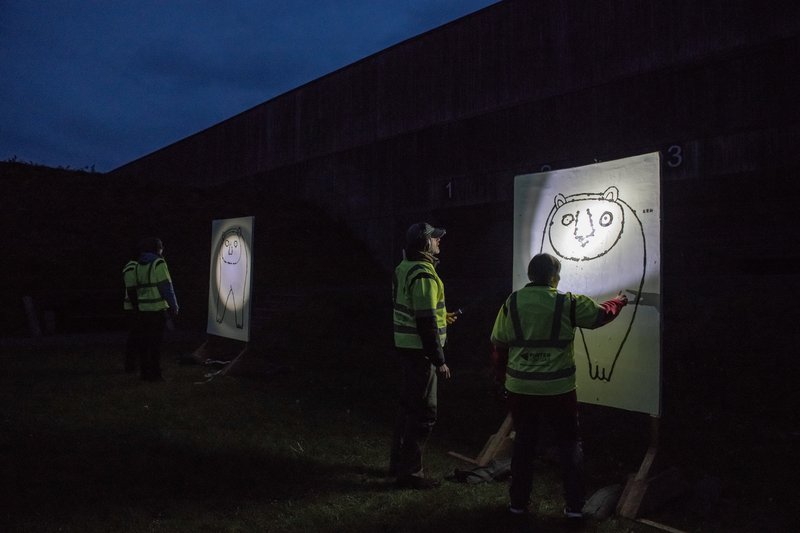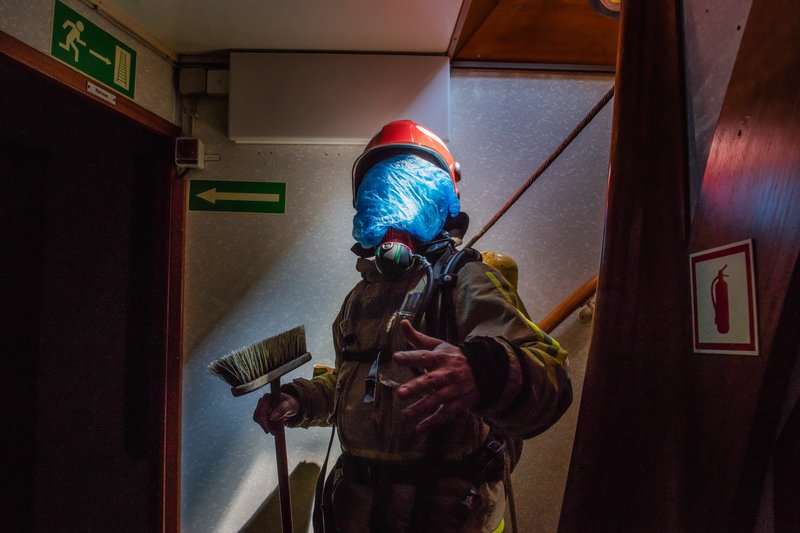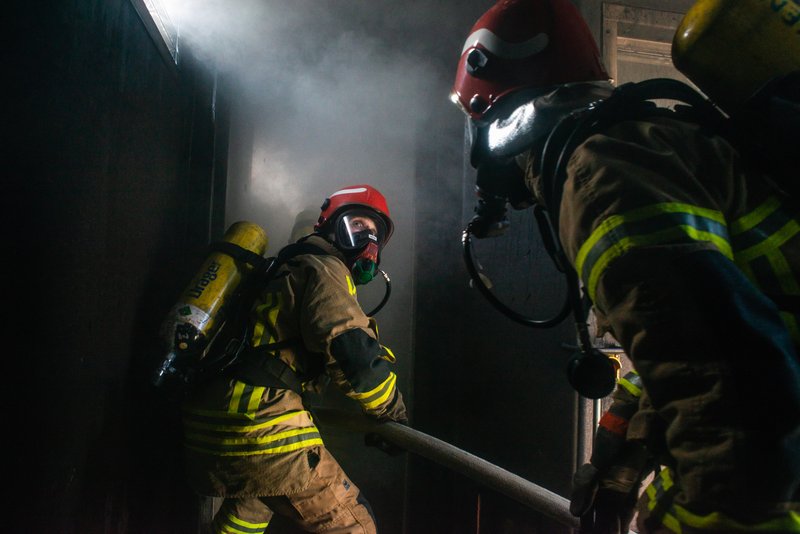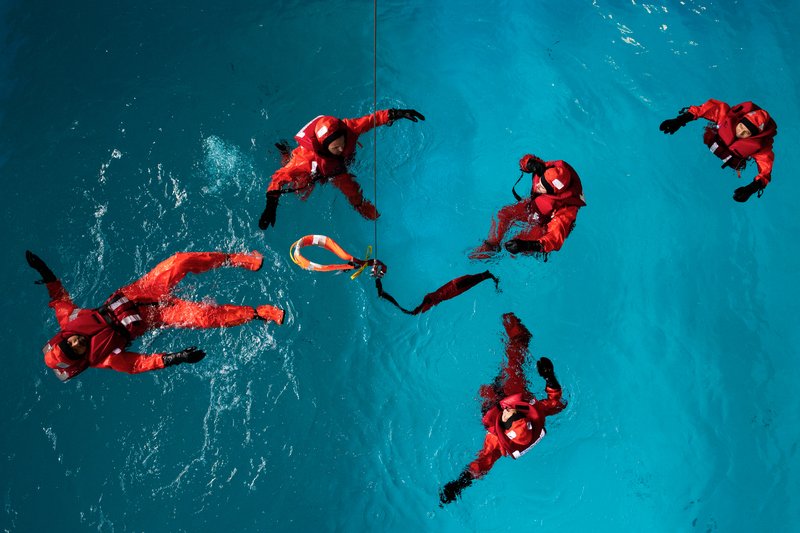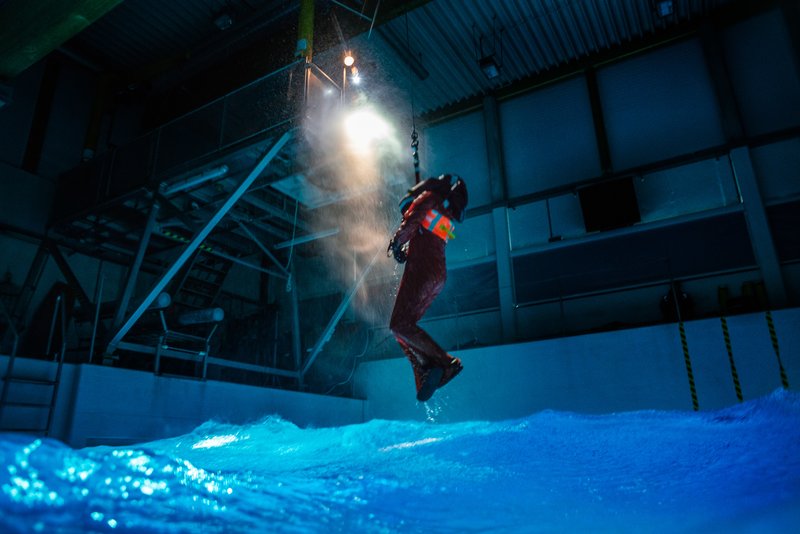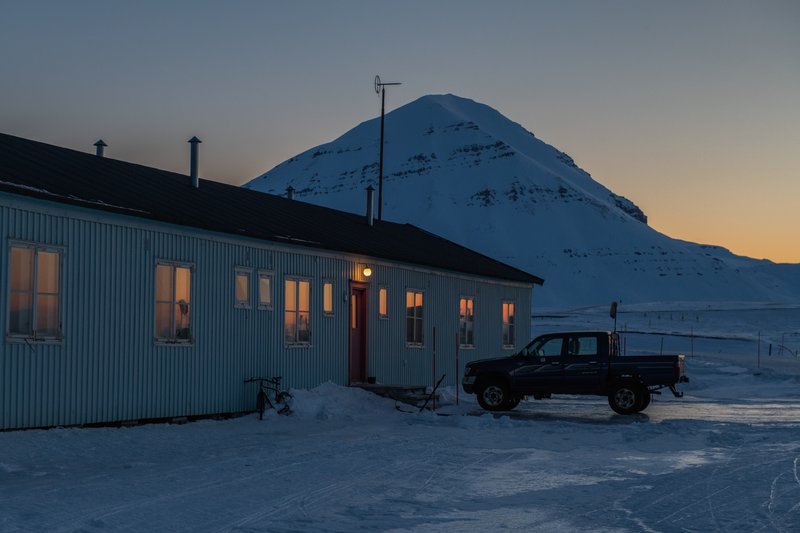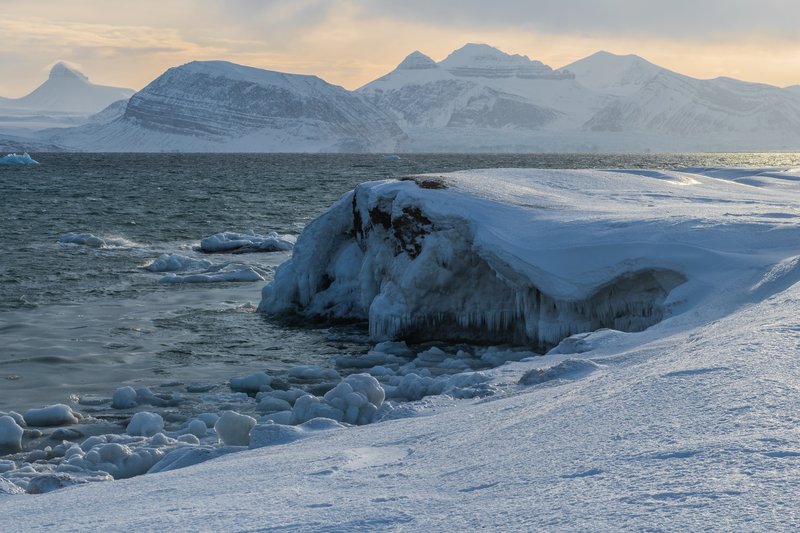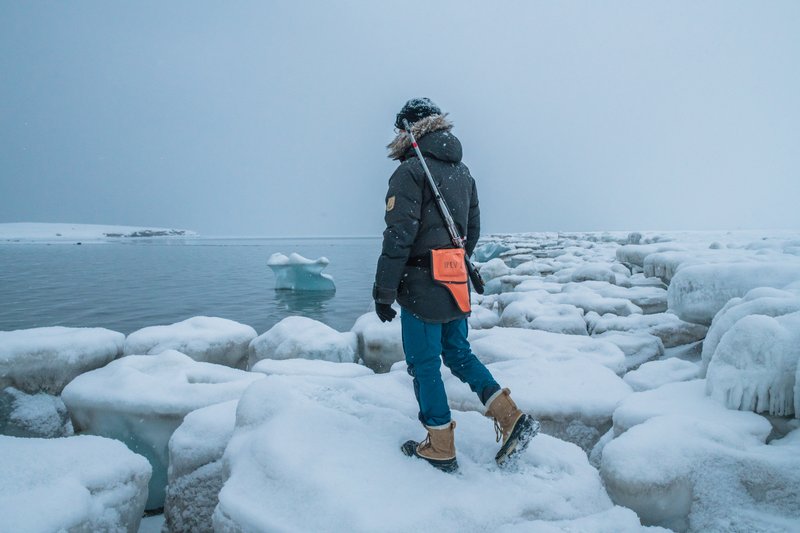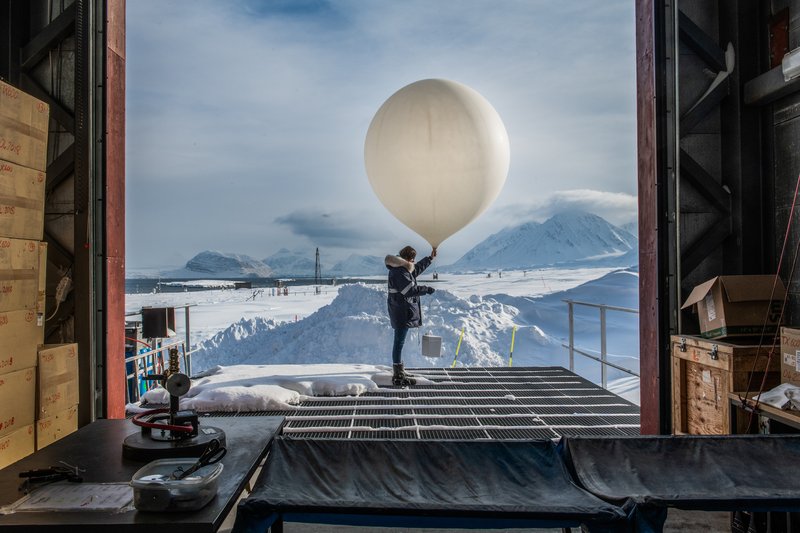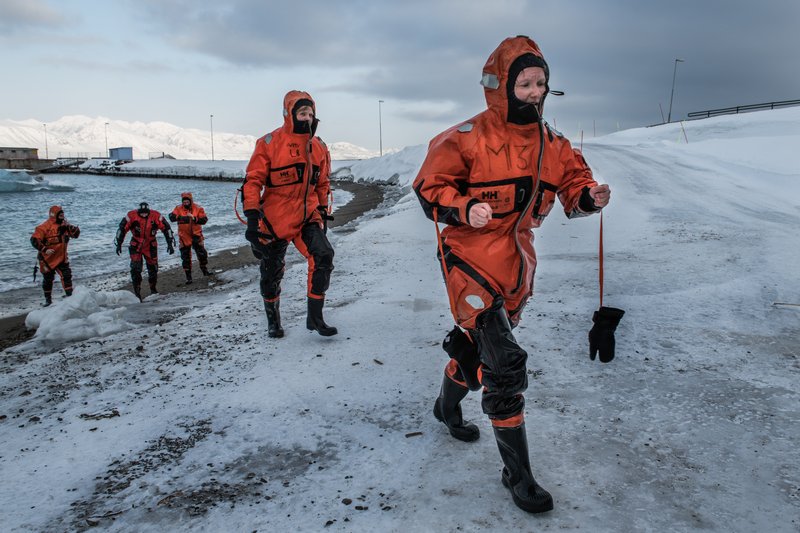MOSAiC Preparation
Anja Sommerfeld from Alfred Wegener Institute launches a ozone sonde as a part of the work routine and MOSAiC science training.
“They release a weather balloon every single day at lunch time, also during holidays, also during the weekend, every single day for 30 years.”
Fire Around The Clock
If a home is on fire, Special Operations Command (SOC) of the New York City Fire Department is the first unit to respond. SOC is considered the most elite company within the FDNY community. They are trained for quick response to rescue and evacuate civilians, and to perform decontamination tasks.
They are the firefighters who run into the biggest danger to save people they have never met. Rescue Battalion Chief James Yakimovich said, “It is very satisfying to know that what we do makes a difference in people’s lives. We are not firefighters to get recognition, or to be recognized for doing our job. We do our job because we love to help people out.”
SOC firefighters respond to alarms 24 hours around the clock and also spend long hours in the firehouse, which is their second home. The documentary project shows the “in an out” life cycle of the firefighters between saving burning homes and living in the fire house.
My work on this project began in September 2012 and followed it for 3 years. I was accepted as a member of their team. I had complete access to document the day and night activities of the fire fighters and of the battalion chiefs. In the Fire House I also captured behind the scenes moments.
Baby Giants - Rescue
Cape Cod has the world's largest annual sea turtle stranding. In this area, which is also called the ‘Deadly Bucket’, 85% of the stranded sea turtles are the most critically endangered known as Kemp’s Ridley turtles.
The Mass Audubon Wellfleet Bay Wildlife Sanctuary is responsible for the beach rescue of stranded sea turtles along Cape Cod. Robert Prescott, Director of Wellfleet Bay Wildlife Sanctuary, found his first stranded Kemp’s Ridley sea turtle in 1974 and afterward started to organize the collection of the stranded sea turtles.
Today, staff and volunteers of the Sanctuary walk Cape Cod beaches between October and January, twice a day after the high tide searching for the cold stranded sea turtles.
Robert Prescott, Director of Wellfleet Bay Wildlife Sanctuary said, “Our work is like a life saving crew. If the turtle is alive you have to go and get it. Each turtle counts. We never leave a live turtle on the beach, no matter what the conditions are, we make the effort to go out and get it.”
Sanctuary staff transport stranded sea turtles to the Marine Animal Rescue Team at the New England Aquarium, where they specialize in rehabilitating stranded sea turtles. They provide rewarming, rehabilitation and subsequent release back into the ocean.
Where can rescued, endangered animals find home if they are not releasable because of their prior injuries?
In the United States rehabilitation centers face a big challenge with finding new permanent homes for non-releasable sea turtles. Rehabilitation centers need space for their new patients and there are not enough Aquariums or Zoos which can take non-releasable sea turtles.
US Coast Guard icebreaker Healy
In 2015 I received an assignment from Sabine Meyer, Director of Photography of Audubon Magazine. The assignment was to leave for the Arctic Ocean aboard the US Coast Guard icebreaker Healy to document their science and research. This was my very first expedition to the polar regions. I spent sleepless nights standing on the deck of the ship, mesmerized by the view. After returning, I decided to focus my documentary photography on the disappearing Arctic Ocean sea ice.
Due to the warming temperatures, Arctic is undergoing unprecedented change as the summer sea ice continues to shrink. As the ice contracts, shipping within and across the Arctic, oil and gas exploration and tourism will likely increase. In addition, fishing will expand as fish continue migrating north to cooler waters. Potential impacts from shipping include: the release of oil through accidental or illegal discharge, ship strikes on marine mammals, disruption of migratory patterns of marine mammals, increased anthropogenic noise and increased atmospheric emissions.
US Coast Guard has to be prepared to respond to boat accidents, oil spill and environmental disaster in this remote area of the Arctic Ocean. This work is crucial to help prevent and manage environmental catastrophes to protect this important marine habitat in the Arctic Ocean.
In 2014 and 2015 US Coast Guard Cutter Healy embarked two times for its “Rescue and Research” mission with 50 scientist and 100 US Coast Guard crew members on board. US Coast Guard Research and Development Center tested and evaluated new technologies to improve capabilities in search and rescue in the Arctic. During the mission of the icebreaker Healy scientists from various agencies collected oceanographic and atmospheric data, deploying buoys and wave gliders, which would take long-term measurements of wind speed, air temperature, humidity, cloud coverage, solar radiation, water temperature, acidity, salinity, dissolved oxygen, and many other environmental conditions—key baseline data with global repercussions from a little-studied part of the Arctic.
IceBird – Station Nord, Greenland
Since 2001, the Arctic Ocean sea ice thickness has decreased by approx. 24% in the summer months.
According to sea ice models, the Arctic Ocean can be ice free during the summer months by 2035. This beautiful, mesmerizing landscape can disappear along with the majority of the species that depend upon it.
Who are the scientists that are delivering this information and how do they work and live in one of the most remote locations in the world? This is what I am truly interested in documenting.
The base of the Arctic Ocean sea ice thickness expeditions called “IceBird” by Alfred Wegener Institute is Station Nord. It is the northernmost base in Greenland. The station is occupied by six Danish soldiers who stay there for two years at a time. There are also two dogs, who provide company. Between September and March the soldiers are completely alone. In March, as the first scientists arrive, the soldiers are very happy to see other human beings again.
Alfred Wegener Institute comes to the station twice a year to conduct sea ice thickness measurements. This story is about their life and science at one of the most remote locations of our planet.
I have been following the IceBird research expedition since 2016.
Related Links
Ice Surveys and Neckties at Dinner: Here’s Life at an Arctic Outpost
Melting Arctic Ocean
The Arctic is undergoing unprecedented change as the summer sea ice continues to shrink. As the ice contracts, shipping within and across the Arctic along with oil and gas exploration and tourism will likely increase.
New research shows that by 2035, we are on track towards experiencing the first sea ice free summer in the Arctic Ocean.
MOSAiC
For the first time, I have experienced the polar nights on the sea ice of the Central Arctic Ocean. During the first part of the MOSAiC expedition, embarked on September 20th, 2019, we lived in complete darkness for almost 3 months, mesmerized by the magic of the polar nights every single day.
Time had a different speed during the expedition. Being on the sea ice felt like being on a different planet. I was fascinated by the beauty of the landscape, appearing only in the spotlight of our vessel and in our little headlamps we carried with us to navigate safely on the moving sea ice.
In September 2019 the German research icebreaker Polarstern embarked on a one-year long scientific polar expedition called MOSAiC, which is the largest Arctic Ocean science expedition of our history. Frozen into the sea ice the ship drifted across the Central Arctic Ocean for an entire year, including the Arctic winter. Polarstern served as the central logistics platform for an international science team and a ship crew of 100 people at a time.
As an official photographer of the expedition, I spent 3.5 months documenting scientific research and life on Polarstern and one month documenting the MOSAiC airborne based expedition from Longyearbyen, Svalbard.
Why is this science expedition important? In the Arctic, the temperature rise has exceeded the average global warming by a factor of two to three, resulting in rapidly declining sea-ice extent and thickness. Unfortunately, scientific data from the central Arctic is still rare, especially during winter months. This climate research mission in a remote and hostile part of the planet, set-up to understand the rapidly changing, yet largely unexplored environment of the Central Arctic Ocean.
As the Arctic is a core driver of the Earth’s climate system, the expedition’s results are crucial to understand and project the regional and global consequences of these changes for human civilization and life on earth.
Story published in The New York Times “Scientists to Drift with the Arctic” on September 19, 2019
Story published in The New York Times “Scientists on Arctic Expedition Choose Ice Floe That’ll be Home for a Year” on October 4, 2019
Story published in The New York Times “Stuck in the Arctic Ice, Dodging Polar Bears. All for science” on November 22, 2019
Story published in The New York Times “Endless Night at -50 Degree: A look at Life on an Icebreaker” on February 7, 2020
Antarctica – closest place on Earth to space
Fresh veggies from Antarctica, from the closest place on Earth to space. The Antarctic is a frigid continent south of the Antarctic Circle, where researchers are the only inhabitants. Despite the hostile conditions, here the Alfred Wegener Institute operates the Neumayer Station, where researchers live and work year round.
I have followed the scientific work and life in Neumayer Station III of Alfred Wegener Institute in January, 2019. About 400 meters next to the station, there is a green oase, EDEN ISS greenhouse, a science project of the German Aerospace Center, developed for International Space Station and planetary exploration. Beside scientific research, the greenhouse provides fresh vegetables for the crew all year around. Veggies are tasty as they can be, even getting no direct sunlight or growing without soil.
Story published in National Geographic.
Women of Arctic Science
"Women of Arctic Science" ongoing project is a portrait series of female expedition participants photographed in Ny-Ålesund, Svalbard, he northernmost community and science village of the world.
"Women of Arctic Science," is a tribute to women, who play an important role in Arctic research.
Svalbard, the northernmost archipelago of Norway, is the epicenter of global warming, where the average winter temperature has increased by 6-8 °C since the 1990s. What role do the female researchers play in the epicenter of global warming?
The stereotype of polar research is a white, bearded man with a heroic look. This was true in early polar research, when women were not even allowed to participate. Until the late 80s, women were still not represented in many areas of polar research, not because they did not wanted, but because they were seen as a source of unwanted problems. Today, thankfully, women are at the forefront of polar and climate research, although they still often hidden in the shadows of what was once the heroic domain of men.
"Women of Arctic Science" portrait project highlights the important role of female expedition members and residents of Ny-Ålesund, Svalbard, the world's northernmost community and science village.
One of the goal of my project is to show girls and young female adults that they can achieve anything if they work for it, and that gender does not matter, even when it comes to working in the harshest environment on the planet.
In the Arctic, the polar night is a significant period of the year. Each woman has been portrayed during the dark hours to feel the magical atmosphere of the dark night, with her research or professional tool, in a place where she is connected to through her work or her dreams. The photos are accompanied by quotes and information about her scientific work or dreams.
They all have one thing in common: care, concern and love for the most fragile environment of our planet.



